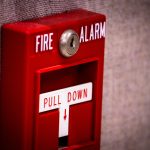Building a Crisis Management Team in Your School: A Step-by-Step Guide
Hello there! I’m a fervent believer in the adage “better safe than sorry.” When it comes to schools, the need for preparedness is of paramount importance. Let’s dive deep into how we can create an efficient Crisis Management Team in a school, shall we?
Introduction to Crisis Management in Schools
Picture this: The school bell rings and suddenly, the fire alarm goes off. Confusion ensues. What’s the next step? If your school has a robust crisis management team, you’ll know.
Understanding the Importance
Safety in schools isn’t just about preventing mishaps; it’s about effectively handling them when they occur. A Crisis Management Team ensures that schools have a systematic approach to deal with unexpected events.
The Risks of Being Unprepared
Ever tried navigating through a storm without a compass? That’s what it’s like for a school without a Crisis Management Team during emergencies. The result? Panic, chaos, and, unfortunately, increased risks.
Steps to Building a Crisis Management Team
Step 1: Assess the Current Situation
Before assembling a team, it’s crucial to understand where your school stands. What potential crises could arise? This requires surveys, inspections, and open conversations with stakeholders.
Step 2: Define Roles and Responsibilities
A team without clear roles is like a ship without a captain. Designate tasks: Who handles communications? Who’s in charge of evacuation? Define this early on.
Step 3: Training and Development
Having a team isn’t enough; they need to be trained. From mock drills to attending crisis management workshops, ensure your team is equipped.
Step 4: Creating a Communication Plan
During a crisis, clear communication is your best friend. Design a communication plan. Who gets informed first? How? Establish a clear protocol.
Step 5: Regular Re-assessments and Updates
The world changes. So should your crisis management strategies. Periodic assessments will help the team evolve and adapt.
Tools and Resources for Effective Crisis Management
Technological Tools
From apps that send alerts to stakeholders to tools that help map escape routes, leverage technology to your advantage.
Training Workshops and Courses
Knowledge is power. Enroll your team in courses that keep them updated with the latest in crisis management.
Potential Challenges and Their Solutions
Every good initiative has its challenges. But with forethought and planning, hurdles can be overcome. Whether it’s resistance from stakeholders or budget constraints, always have a plan B.
Benefits of a Robust Crisis Management Team
Imagine a school where every emergency is tackled with calm and efficiency. That’s the power of a good Crisis Management Team.
Conclusion
Building a Crisis Management Team is not just a safety protocol; it’s an investment in the wellbeing of every individual in a school. With the right steps and persistence, any school can ensure safety, come what may.
FAQs
- How often should we conduct mock drills?
Ideally, at least once a semester. This ensures everyone remains familiar with the protocols. - What’s the first step in crisis communication?
Informing the concerned authorities and primary stakeholders (like parents) promptly and transparently. - How do we get the entire school to cooperate during drills?
Awareness. Conduct sessions explaining the importance and ensure every student and staff member understands their role. - What if we lack the budget for sophisticated tools?
While tools help, the key lies in regular training and awareness. Sometimes, simple initiatives can be highly effective. - How large should the Team be?
This depends on the school’s size. However, representation from every department and student group is crucial.





No Comments